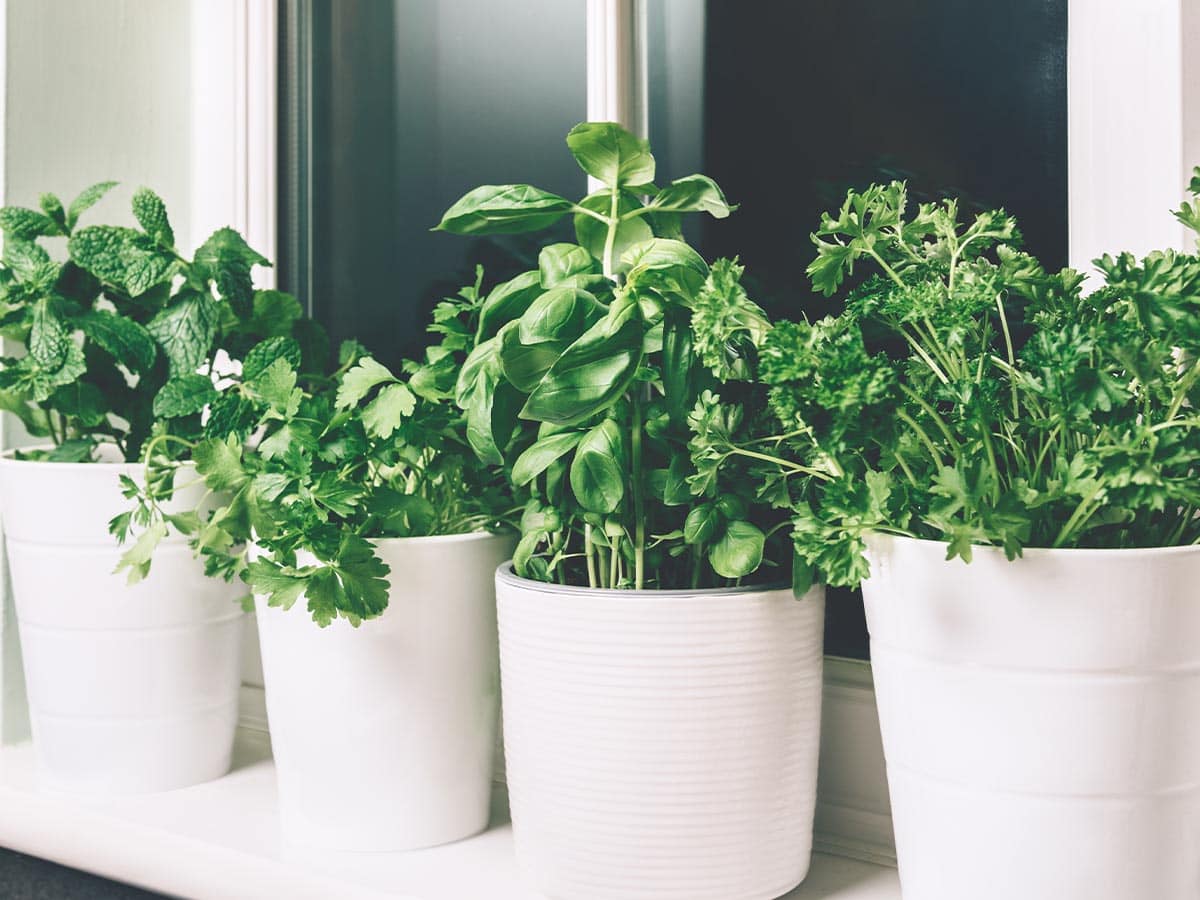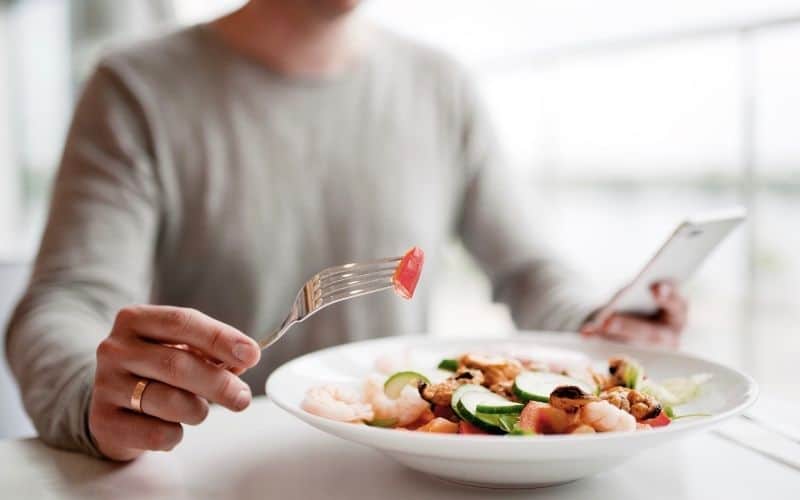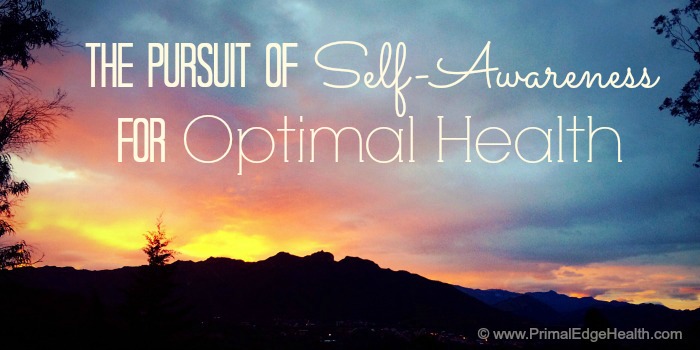5 Pillars of Clean Living You Can Start Today
Primal Edge Health participates in the Amazon Services LLC Associates Program and other affiliate programs and therefore, may collect a share of sales or other compensation from the links on this page. This comes at no additional cost to you, and all the prices and availability are accurate at the time of publishing.
What is clean living and how you can adopt it? We might have varying definitions of a clean lifestyle, but I think we can agree that it centers around life with as few toxins, chemicals, and man-made harms as possible.

However, living a clean life is not as easy as it sounds, and it certainly doesn’t happen overnight. It involves following and committing to simple living tips like eating healthier and maintaining a clean, clutter-free home.
So, in this guide, I’ve highlighted some of the best ways you can start curating a simpler, healthier, and safer home for you and your family today.
Include More High-Quality Foods in Your Diet
One of the most important pillars of a clean lifestyle is centering your diet around whole, high-quality foods. It doesn’t matter what type of diet you follow, whether that be carnivore, keto, low-oxalate, or just a regular diet with no specific conditions.
Plus, striving towards a balanced diet can make it easier to live a healthy lifestyle, especially for busy parents. When the foods available in your home are whole and nutritious, you won’t have to think too hard about making sure your meals are healthy all the time.
The focus should be on the quality and nutrient density of the foods you eat. Aim for high-quality and nutrient-rich foods, be it vegetables, fruits, lean protein, whole grains, dairy, beans, healthy fats, and even processed foods.
Don’t forget drinks – lemon water, lion’s mane tea, and healthy energy drinks are just a few ideal ones to include in your diet. Additionally, you can participate in health campaigns like Dry January to help minimize alcohol consumption.
Let’s start with fresh produce. Fresh fruits and vegetables provide the vitamins, minerals, and antioxidants your body needs to thrive. If it’s accessible, try prioritizing local foods in your area, such as fresh produce from farmers’ markets, independent food shops, or small farm stores.
As for proteins, the fresher, the better. According to meat supplier Martin Gilder, local meat sourcing is a great way to get more nutritious, better-tasting meat while supporting your local community. Community stores are also great sources of other animal products like:
- Eggs
- Milk
- Fresh butter
- Cheese
- Fish
Not only does fresh meat taste better, but it also often contains fewer preservatives since they don’t go through the long process of processing, packaging, and transportation like the meat you find in grocery stores. Buying meat from a local supplier can also score good discounts if you purchase in bulk, which is a great way to save money on animal foods.
Not all of us can buy directly from a farmer, but the local butcher is your next best bet. Compared to supermarkets, butchers usually know where their meat comes from and when it was slaughtered, meaning you are more likely to get fresher, higher-quality meat.
Processed Food
Now, what about processed and packaged food like snacks, beverages, or pantry staples? It is not realistic to cut out all processed foods since these also include things like rice, bread, pasta, coffee, milk, and things you can’t easily make at home.
However, you can make better choices by swapping them out for less processed options. For example, you can:
- Bake your own bread instead of buying pre-packaged bread
- Prep common packaged ingredients from scratch, e.g., make fresh chicken stock instead of using stock from a carton
- Make homemade snacks instead to replace processed favorites, e.g., homemade trail mix, granola bars, fruit chips, etc.
- Create homemade versions of condiments like ketchup and mayonnaise
- Learn how to preserve veggies, e.g., canning, drying, or fermenting vegetables
- Swap ultra-processed ingredients for more natural options and whole foods, e.g., use avocados as a fat source instead of vegetable oil
On a similar note, it’s best to avoid high or ultra-processed foods. According to Harvard Health, these foods likely contain many added ingredients like fats, starches, and sugars. They may also include additives like preservatives and stabilizers. Examples include:
- Ready-meals
- Soda and sugary juices
- Cured or salted meats
- Packaged snacks
- Canned food
- Candy
Harvard says these foods contain higher amounts of calories, fat, sodium, and sugar. These nutrients aren’t inherently bad, but too much of them won’t support long-term health. Plus, some of these foods contain a disproportionate amount of calories, sugar, and other nutrients relative to their serving size, which means it won’t make you feel as full even if you’re ingesting a lot of calories.

Rethink Your Cleaning Products
When it comes to clean living, what you put in your body is crucial, but what you use around your home is just as important. Many conventional cleaning products contain toxic chemicals that can negatively impact your health and the environment.
Start by examining the labels of your current cleaning products. Look for common harmful ingredients like ammonia, chlorine bleach, phthalates, and triclosan. According to the Environmental Protection Agency (EPA), these harmful chemicals can cause respiratory issues, skin irritation, and other health problems. They also contribute to environmental pollution when they wash down the drain.
That said, switch to natural and eco-friendly cleaning products like non-toxic dish soap and laundry detergent. For instance, I use a fragrance-free liquid soap with natural ingredients so it doesn’t irritate my skin.
Many brands offer eco-friendly options that are free from harsh chemicals and made with plant-based ingredients. Look for certifications like EPA’s Safer Choice, Green Seal, or EcoLogo to make sure the products meet stringent safety standards.
Prioritize cleaning solutions made with natural ingredients as much as possible. Alternatively, you can make a DIY cleaner at home using natural ingredients like vinegar, lemon juice, and baking soda. Pro tip: Pair your homemade solvents with microfiber cloths instead of paper towels to save money and reduce waste.
If you still use some inorganic cleaning products, you might want to invest in an air purifier. This device can help get rid of excess VOCs in the air and can even prevent airborne afflictions, especially winter illnesses like the flu.
Choose Better Beauty and Hygiene Products
Just as you scrutinize food labels, it’s important to read the labels on your beauty and hygiene products. Look out for potentially harmful ingredients like parabens, sulfates, phthalates, synthetic fragrances, and triclosan, says the Campaign for Safe Cosmetics (CSC).
These can harm your eyes, hair, and especially your skin, the largest organ. They can also be especially harmful for people with asthma, eczema, allergies, and other conditions that chemicals can exacerbate.
The good news is that there are plenty of natural and organic personal care products that are formulated without harsh chemicals, synthetic additives, or artificial fragrances. Most of them utilize the power of plant-based ingredients, essential oils, and botanicals to nourish and care for your skin and hair.
A great alternative to store-bought products is to make your own. For example, you can make non-toxic baby lotion or pure tallow soap with beef tallow, a natural moisturizing ingredient that won’t irritate sensitive skin. I also have a list of DIY bath and body recipes made with organic or natural ingredients, such as lip balms, wrinkle creams, and moisturizers.
You might have to be more vigilant when reading the ingredient list. Avoid beauty products with harmful toxins like:
- Acrylates
- Parabens
- Phthalates
- Synthetic musks or fragrances
- Sulfates
- Lead and other heavy metals
- PABA
- Preservatives
- Toluene
- Triclosan
These substances can disrupt hormones, irritate the skin, and cause other health issues. This is especially true if you have sensitive skin. Watch out for these ingredients in shampoos, conditioners, lotions, makeup, skincare products, and other things you use on your face and body.
Refer to the CSC list for more ingredients you should avoid and why you should avoid them. As a general rule, look for products with certifications from the National Sanitation Foundation (NSF), MADE SAFE, FDA, or USDA. However, note that not all FDA or USDA-certified products are safe to use for every skin type.
Don’t Forget About Your Kitchenware
Sometimes, harmful substances can make their way into your home the way you least expect them: through kitchenware. I’m talking about cookware, kitchen utensils, dinnerware, and even reusable bottles.
Forever chemicals, or per- and polyfluoroalkyl substances (PFAS), are synthetic chemicals used in non-stick cookware coatings like Teflon. According to NRDC, these endocrine-disrupting chemicals break down very slowly, leading to their accumulation in the environment and the human body.
PFAS has been linked to several health issues, including hormone disruption, immune system effects, increased risk of certain cancers, developmental issues, and liver damage. It can also affect fertility via endocrine disruption.
To reduce your exposure to these hormone-disrupting chemicals, switch to stainless steel, cast iron, ceramic, or glass cookware. These options contain none of the chemicals that can have significant effects on your health.
For non-toxic kitchen utensils, avoid plastic and opt for wood, stainless steel, or food-safe silicon instead. Plastic can leach into your food, especially when it reaches high temperatures. So, they’re not great options even though they offer a lot of conveniences.
The same goes for food containers and reusable water bottles. Choose glass if you want a safe option that’s durable and visually appealing, but I recommend stainless steel if you’re looking for insulation and overall usability.
Similarly, you might want to avoid plastic food storage containers to reduce your exposure to the dangers of BPA, a substance that can affect brain development and mimic estrogen. If you must use plastic containers, look for BPA-free ones.

Disconnect From Devices
Technology makes our daily lives easier and helps connect us with the world outside our home. However, constant connectivity can lead to several issues, such as digital fatigue, sleep disturbances, reduced productivity, and increased stress levels.
For one, the blue light emitted by screens interferes with the production of melatonin, the hormone responsible for regulating sleep. Moreover, the perpetual influx of notifications and the pressure to stay updated can create a sense of overwhelm and anxiety.
This is why part of my clean living initiative is to limit the use of devices as much as possible. Less screen time can lead to several benefits, such as:
- A more regulated circadian rhythm, meaning fewer sleep disturbances and an easier time falling asleep
- Less stress and anxiety due to less exposure to stressful content or negativity
- Better work-life balance since you’re not constantly available
- More motivation to find downtime alternatives, such as reading, spending time with family, or meditating
Make Small Changes For Tomorrow’s Benefits
These are just some of the ways you can start building a cleaner lifestyle, but they are the most important. Plus, for most people, these are the easiest ways to make simple yet actionable changes in their lives.
Clean living is not something you can do overnight. However, shifting to such a lifestyle is entirely possible when you do it step-by-step. Take these tips to heart and start making your way towards your dream life today!







